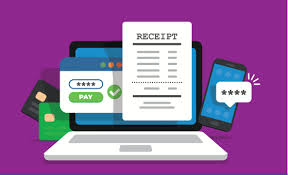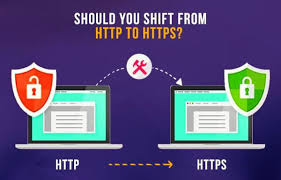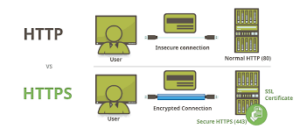In today’s digital age, where online hacking and identity theft are prevalent, ensuring safety while engaging in mobile banking is crucial. Consumers can significantly reduce their risk of falling victim to financial crimes by familiarising themselves with various cyber threats, such as malware and counterfeit banking applications. To enhance security measures, it’s advisable to utilise the protective features provided by banks, including mobile alerts and multi-factor authentication.

For many individuals, mobile banking has become an essential aspect of managing finances. It allows users to perform a variety of tasks like checking account balances, transferring funds, and settling bills with just a few taps on their devices. The American Bankers Association reports that nearly half (48 percent) of bank customers prefer using apps on smartphones or other mobile devices for managing their accounts.
However, the question remains: Is mobile banking genuinely secure? Identity thieves often exploit bank fraud to steal personal information for financial gain. Cybersecurity experts assert that while mobile banking can be safe, consumers should take specific precautions. According to Paul Benda, senior vice president for operational risk and cybersecurity at the American Bankers Association, downloading a mobile app from a reputable source is as secure as visiting a physical bank branch. He emphasises that the safest option is to download the app directly from your bank’s official website.
Banks employ advanced encryption technologies to protect user data effectively. Benda likens mobile apps to having a bank branch conveniently located in your pocket—a powerful tool for financial management when used wisely. As you navigate this landscape of digital finance, remain vigilant against various forms of cyber threats that may arise.
Be cautious of these specific types of cyberattacks, as fraudsters have numerous tactics to target consumers. The FBI highlights two particularly concerning forms of cyber threats. First, there are app-based banking Trojans. These malicious programs are often concealed within seemingly harmless applications, such as games or utility tools, which unsuspecting bank customers may download. When users install these sideloaded apps from unofficial sources, they may unknowingly introduce malware that remains inactive until they open a legitimate banking application. At that point, the Trojan generates a deceptive pop-up overlay that resembles the bank’s actual login page. As users enter their credentials, they  are seamlessly redirected to the genuine banking app without realising they’ve just fallen victim to a scam. This type of malware can be distributed through various methods, including SMS messages containing malicious links, according to Teresa Walsh from the Financial Services Information Sharing and Analysis Center (FS-ISAC), which works to combat cyber threats in financial services. Alarmingly, such malware is even available for purchase on underground criminal marketplaces.
are seamlessly redirected to the genuine banking app without realising they’ve just fallen victim to a scam. This type of malware can be distributed through various methods, including SMS messages containing malicious links, according to Teresa Walsh from the Financial Services Information Sharing and Analysis Center (FS-ISAC), which works to combat cyber threats in financial services. Alarmingly, such malware is even available for purchase on underground criminal marketplaces.
The second type of attack involves fake banking apps that mimic authentic mobile applications from banks with the intent of tricking users into providing their login information. The FBI notes that this is one of the fastest-growing areas of smartphone-related fraud.
Suppose you’re contemplating whether to use a mobile banking app due to security concerns. In that case, it’s essential to recognise that threats can arise in any environment—even within a bank lobby itself. There exists the possibility that a bank employee might engage in illegal activities such as stealing your financial information; this scenario is referred to as an insider threat, explains Donald Korinchak from CyberExperts.com. Additionally, while using a mobile app, vulnerabilities may stem not only from the app’s security framework—such as flaws in its code or encryption methods—but also from potential weaknesses related to how information is transmitted over networks.
To safeguard yourself from mobile banking fraud, start by downloading a legitimate banking app directly from your bank’s official website. Many banks provide links to the appropriate app stores on their sites to ensure you get the correct application. According to FS-ISAC’s Walsh, your bank should offer precise information about the type of mobile app they provide, its features, and the requirements for access. When you’re ready to download, make sure you use a trustworthy app store and verify the developer of the app, being cautious of any other apps that might share its name. It’s wise to consult with your bank before proceeding and avoid downloading apps found on open forums.

Next, confirm that your bank implements two-factor or multi-factor authentication. This security measure requires customers to verify their identity when logging into their accounts by supplying at least two forms of authentication—typically a password or PIN along with a confirmation code sent via text message to their mobile device. While this method significantly enhances security, as noted by Korinchak, it’s not infallible; someone could potentially access your phone or intercept SMS messages to obtain the code.
Another crucial step is creating a robust password. The best defence is using a password composed of random combinations of uppercase and lowercase letters, numbers, and symbols. Avoid relying on your browser’s password storage feature; instead, opt for a reputable password manager. According to Korinchak, these tools are designed with strong security measures that minimise risks for users and protect them against potential threats. Most cybersecurity experts advocate for utilising such software.
Lastly, steer clear of public Wi-Fi networks whenever possible. When connecting to these hotspots, you’re often alerted that you’re not on a secure connection and that others may be able to monitor your online activities—a compelling reason not to engage in any financial transactions over public networks. Instead, rely on your cellular data or secure home Wi-Fi for enhanced protection while managing your banking needs online.

Understanding the risks associated with phishing and smishing is crucial in today’s digital landscape. Phishing emails frequently masquerade as legitimate communications from banks or credit card companies, aiming to deceive individuals into revealing sensitive personal information. These deceptive messages can also harbour malware. Similarly, smishing employs the same tactics but utilises text messages instead. To better identify suspicious inquiries or unusual pop-ups that deviate from familiar features, users should familiarise themselves with their banking applications, as advised by Walsh.
Moreover, setting up alerts through email, text messages, or the bank’s app can serve as an adequate safeguard. Receiving prompt notifications regarding account transactions allows individuals to spot potential fraudulent activities quickly and address them with their bank without delay.
To combat cyber threats, financial institutions such as banks, credit unions, and investment firms allocate substantial resources toward enhancing their security measures. According to Benda from the American Bankers Association (ABA), these entities invest billions to ensure customer accounts are well-protected. Under Regulation E, banks bear responsibility in the event of a cyberattack; this regulation limits consumer liability to $50 for unauthorised electronic funds transfers reported within two business days and up to $500 if reported later—any losses exceeding those amounts fall on the financial institutions.

Benda emphasises that banks have implemented stringent controls to mitigate fraudulent activities; however, much relies on consumers adhering to safe practices when managing their finances online. In conclusion, while banks—particularly those operating exclusively online—dedicate significant time and resources to securing their digital platforms and safeguarding customers against fraud and theft, it is equally important for customers to engage in responsible mobile banking habits to further protect themselves from potential attacks.
Maxthon
Maxthon adopts a thorough strategy to bolster the security of web applications, utilising a range of sophisticated techniques aimed at safeguarding users and their information. At the forefront, the browser employs cutting-edge encryption protocols that serve as a robust barrier for data exchanged between users and online platforms. This ensures that sensitive information, such as passwords and personal details, remains securely encrypted during transmission, effectively preventing unauthorised access attempts.

In addition to its encryption features, Maxthon strongly emphasises keeping security measures current. The browser is committed to providing regular updates that quickly address any identified vulnerabilities. Users are encouraged to enable automatic updates so they can effortlessly receive the latest patches and improvements.
Another key aspect of Maxthon’s offering is its integrated ad blocker, which plays an essential role in shielding users from potentially dangerous advertisements. By filtering out unwanted ads, Maxthon significantly reduces the risk of falling prey to phishing scams or unintentionally downloading harmful software.
Phishing protection is also a crucial element of Maxthon’s security architecture. The browser includes proactive tools that detect and block suspicious websites before users can visit them, adding an essential layer of defence against cybercriminals who seek to exploit unsuspecting individuals.
For those who value their online privacy, Maxthon provides various privacy mode options that enable users to browse without leaving behind traces such as browsing history or cookies during private sessions. This functionality allows users to control their digital footprint while navigating the internet effectively.
Furthermore, Maxthon incorporates an internal firewall specifically designed to monitor both incoming and outgoing traffic for any signs of suspicious behaviour. This additional protective measure enhances user security by monitoring potential threats in real-time.
